The Asscher Cut was first introduced in 1902 by the Asscher Brothers of Holland. This cut peaked in popularity in the 1920s and then made a comeback in 2002, exactly a hundred years after it was first introduced. The modern Asscher cut came with cut modifications that gave the shape better light performance than the traditional Asscher cut.
The Asscher cut looks like a square emerald cut, but usually with larger step‐facets, a higher crown and smaller table, thus producing more brilliance than the emerald cut. An Asscher cut with excellent symmetry will appear to have concentric squares when you look down through the table.
The classic Asscher cut in a square with a length to width ratio of 1.0, but any ratio of 1.05 or less will appear to look square. With 8 carat radiant cut diamonds, if a stone is ‘out of square’, it may be more obvious than with a smaller diamond. We therefore recommend that at 8 carats, you go as close to 1.0 as possible.
8 carat asscher cut diamond cut guide
The following figures are guidelines when choosing your 8 carat Asscher cut.
IDEAL | EXCELLENT | VERY GOOD | GOOD | FAIR | POOR | |
|---|---|---|---|---|---|---|
| TABLE % | 60 – 65.5 | 61 – 69 | 57 – 60 or 70 – 72 | 54 – 56 or 73 – 74 | 51 – 53 or 75 – 79 | < 51 or > 79 |
| DEPTH % | 60 – 65.5 | 61 – 67 | 59 – 60.9 or 70.1 – 74 | 57 – 58.9 or 70.1 – 74 | 54 – 56.9 or 74.1 – 79 | < 54 or > 79 |
| GIRDLE | Very Thin – Slightly Thick | Very Thin to Thick | Very Thin to Very Thick | Extra Thin to Extra Thick | ||
| CULET | None | Very Small | Small | Medium | > Medium | |
| L/W RATIO | 1.00 | 1.00 – 1.03 | 1.04 – 1.05 | 1.06 – 1.08 | > 1.08 | |
| CROWN HEIGHT % | 12 – 15% | 11 – 16% | 9 – 16.5% | 7 – 18% | 6 – 20.5% | < 6% or > 20.5% |
Unlike ‘brilliant’ diamond shapes, which reflect light off the facets at the bottom of the diamonds and back up through the table, Asscher cuts simply bounce light off their surface. For this reason, proportions are not quite as important as with some other cuts, like the princess cut.
When choose your 8 carat diamond, you may therefore look to choose a stone that has the best balance between visible size (when viewed from the top down) and proportions.
8 carat asscher cut diamond clarity
Often, inclusions are easier to see in an asscher cut diamond.
While an SI1-clarity might be a great balance of price and appearance in brilliant diamond shapes, an asscher diamond of the same size would need to be VS2 to match in quality. Use the clarity chart below for a general guide for evaluating clarity in asscher cut diamonds.
EXCELLENT | VERY GOOD | GOOD | FAIR | POOR | |
|---|---|---|---|---|---|
| < .50 CT | D – G | H – I | J – K | L – M | > M |
| .51 – 1.0 CT | D – F | G | H – I | J – K | > K |
| 1.0 – 2.0 CT | D – F | G | H – I | > I | |
| > 2.0 CT | D – F | G | H – I | > I | |
| FLUORO | NONE | FAINT | MEDIUM | STRONG – VERY STRONG |
ASET & Idealscope
Both ASET and Idealscope images can help you to better evaluate the light performance of your diamond. Both tools will reveal areas of light leakage in white, but an ASET reading contains more detailed information. Because of this, it is the preferred method for evaluating fancy cut diamonds. However, because of the Idealscope’s simplicity, it is a more user-friendly tool for non-gemologists. All you need to know when reading an idealscope is that white areas represent light leakage (bad) and red areas indicate light return (good).
Check out these images below for examples of ASET and Idealscope readings for asscher diamonds:


